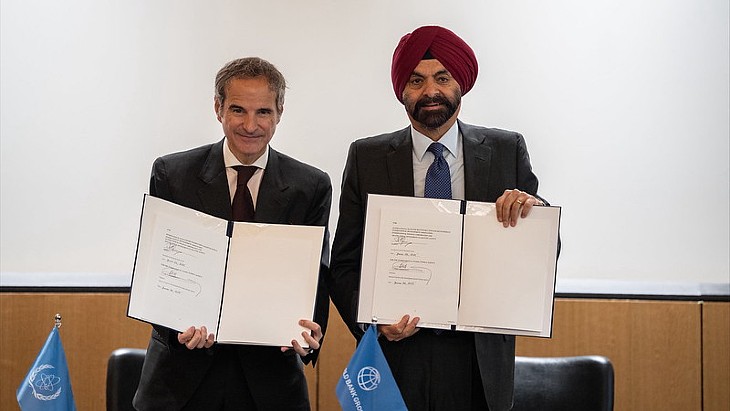First-of-its-kind 3D printed nuclear fuel component to enter use
.jpg)
The channel fasteners secure the fuel channel to the assembly. They were printed at ORNL using additive manufacturing techniques - also known as 3D printing - and installed on Atrium 10XM boiling water reactor fuel assemblies at Framatome's nuclear fuel manufacturing facility in Richland, Washington.
Channel fasteners have traditionally been fabricated from castings and require precision machining. Additive manufacturing techniques deposit material in layers, following a computer-designed model, to form precise shapes without the need for later carving or machining. This is a more efficient way to achieve the tight specifications of these components, Framatome said.
Ala Alzaben, senior vice president of the Commercial and Customer Center of the Fuel Business Unit at Framatome, said this way to manufacture components will help to reduce costs while maintaining plant safety and reliability, describing it as a "major advancement for Framatome and the nuclear energy industry".
The TCR programme was launched in 2019 with the goal of designing, manufacturing and operating a demonstration additively manufactured microreactor by 2023.
"This is one of the first steps in ORNL's coordinated efforts with the NRC's Office of Regulatory Research and the nuclear vendors to prove that a new and greatly accelerated approach for qualified part fabrication is possible," TCR Director Kurt Terrani said.
Channel fasteners perform an essential function in the fuel assembly and are easily fabricated using additive manufacturing, making them an ideal part to demonstrate the use of the new technique, the partners said. ORNL is also providing all the 3D digital data captured during the manufacturing process that details each layer of the print, which can then be used to certify the quality of the bracket.
Dan Stout, TVA's director of Nuclear Technology Innovation, said that by using the additively manufactured components TVA was supporting an innovative manufacturing approach that could pave the way for use across the existing nuclear fleet, in advanced reactors and in small modular reactors. "This is the type of innovation we envisioned taking place under the MoU we entered into with ORNL earlier this year," he said.
The new brackets will be loaded into Browns Ferry unit 2 in March, and will remain in the reactor for six years, with inspections planned during outages and after use.
_49098.jpg)
_57190.jpg)
_70526.jpg)
_75453.jpg)





..._58412.jpg)

